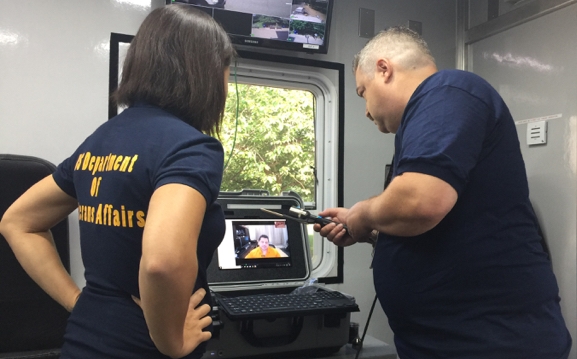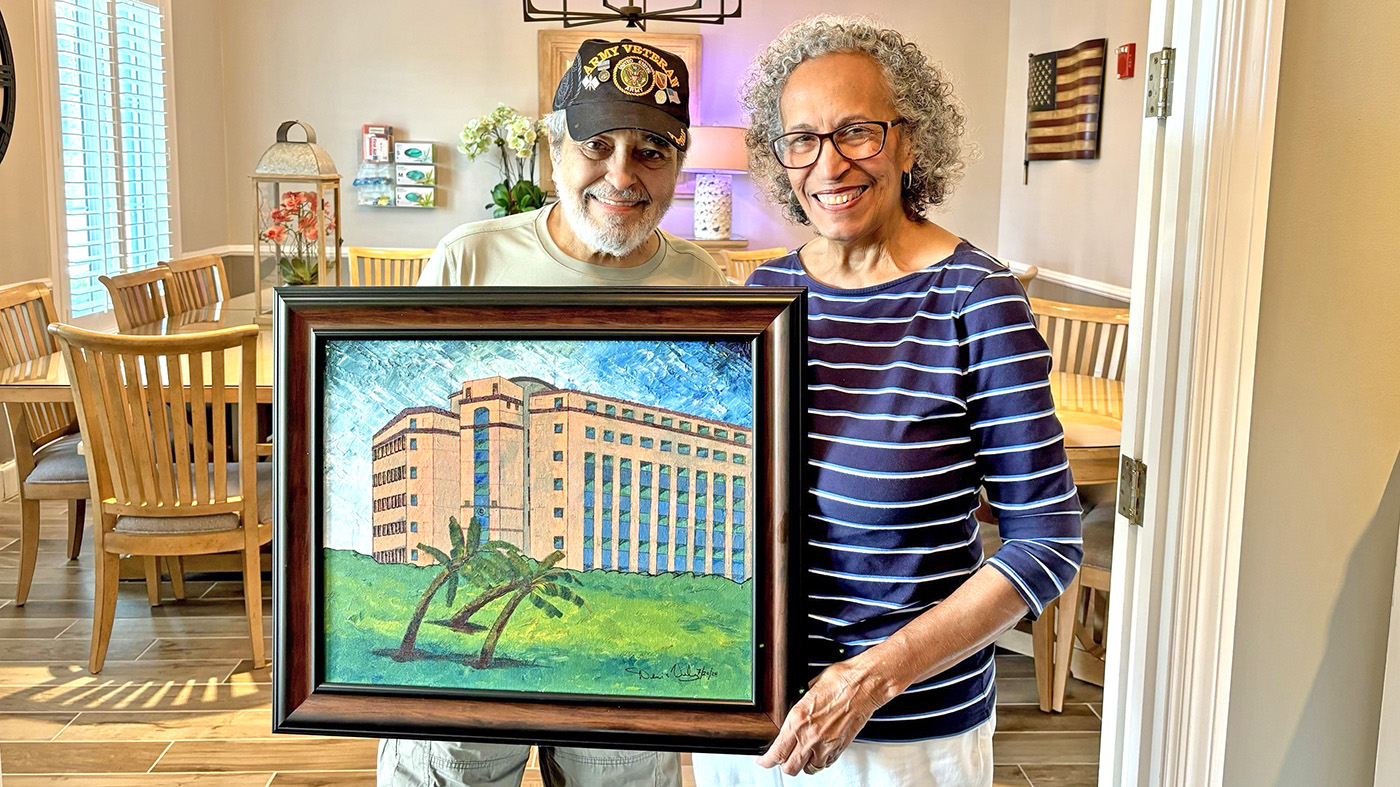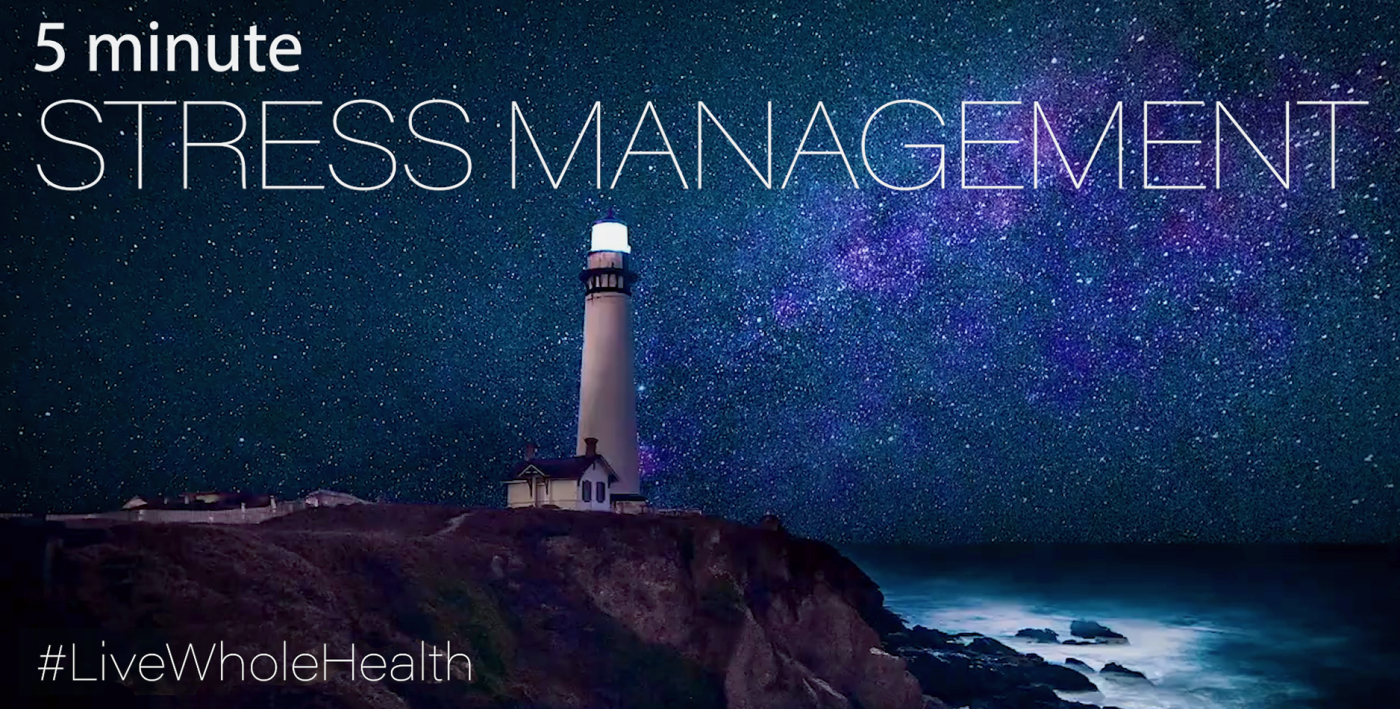It was the perfect opportunity to show the breadth of VA’s telehealth technologies. As more than 500,000 people came together on the National Mall to celebrate the July Fourth holiday in the nation’s capital, VA’s Telehealth Emergency Medicine team took the opportunity to demonstrate how VA technologies could be used during an emergency. With a telehealth mobile unit parked near the crowds, VA began their tests, which had already attracted interested collaborators from the Department of Health and Human Services and the National Disaster Medical System.
Testing Signal Strength
The crowded Mall served as a stress-test data zone for evaluating the telehealth mobile unit’s cellular and satellite equipment.
“We had activated a number of satellites and Wi-Fi channels with the goal of understanding what our capabilities were and seeing how many telehealth sessions we could run at the same time,” said Dr. Leonie Heyworth, national synchronous lead for telehealth services within VHA’s Office of Connected Care. “The Mall provided a perfect setting to simulate a post-disaster scenario, as there were half a million people drawing from cellular towers in a small area.”

Telehealth Emergency Medicine team members test and evaluate technological capabilities July 4 in a simulated a stress-test data zone.
Planning for the Future
These types of real-world tests allow the Telehealth Emergency Medicine team to learn how systems react when pushed to the limits — a key consideration for telehealth’s evolving role in disaster response. Through telehealth technologies, VA can now get to disaster zones much more quickly to aid local and federal emergency teams with their efforts.
“If we can have six, seven, or more concurrent video sessions running, whether for mental health support or to address other clinical concerns, that would be the equivalent of having seven more providers on the ground providing that care,” said Heyworth. “We offer medical support to many patients simultaneously, across a wide range of clinical specialties, by telephone or video in a much timelier manner because of the ability for telehealth to get to a post-disaster area quickly”.
Dr. Paul Kim, director for the VHA Office of Emergency Management who supported the National Mall exercise, spoke to the benefits of demonstrating VA technologies and building partnerships with other federal agencies.
“We’re all from different disciplines, and we’re all focused on one common goal: to bring needed services to Veterans, or anyone else that might need our help, during an emergency,” said Kim. “If we can decrease the reliance on physical bodies in the disaster zone, by relying on smaller teams with telehealth capabilities, we can decrease the potential for putting these specialists in harm’s way. I’m thrilled about it.”
Topics in this story
More Stories
Army Veteran Denis Velez donated a painting of his VA hospital as a way of giving back for his treatment there.
Ron Anderson's story of being caregiver for his father in his final years is a journey of love and duty.
Ignoring challenging emotions can negatively impact our health. Breathe through worry, anger and sadness in 5 minutes with this week's #LiveWholeHealth practice.






